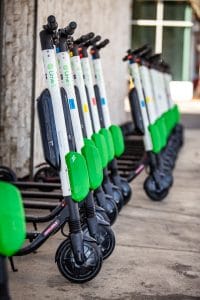 Love them or hate, few people in Santa Monica have not formed some kind of opinion about the dockless shared fleet e-scooter wave (as opposed to the “dock” or “hub” based bike share model), started here with Bird, and now additionally Lime. Although I’ve seen some people’s views shift from opposed to supportive once trying it out for themselves and having a “get it” moment.
Love them or hate, few people in Santa Monica have not formed some kind of opinion about the dockless shared fleet e-scooter wave (as opposed to the “dock” or “hub” based bike share model), started here with Bird, and now additionally Lime. Although I’ve seen some people’s views shift from opposed to supportive once trying it out for themselves and having a “get it” moment.
Scooters are not without their problems and headaches. There has been friction in the growing pains of a new model introduced to a landscape not well prepared for their arrival, filling comment sections wherever they are reported upon.
However the e-scooter carries enormous potential, and a glimpse into possible futures of urban transportation that are more sustainable, less destructive and with vastly less risk of serious and lethal harm to others. We should embrace and guide this wave and the opportunity it represents, not attempt to stifle it.
While I am known mostly as advocate and proponent of bicycling, and a conventional bicycle is unbeatable in energy efficiency in minimal environmental impact for miles traveled, the e-scooters seem to have an appeal to some who for various reasons are not interested in cycling. These devices represent a substantial reduction in many kinds of impacts over cars that I welcome. By dropping the 2 tons of dead weight and largely empty seats of cars that are oversized and overpowered for their typical use in cities, the scooters can carry people with motors that use vastly less power and much smaller and lighter batteries than an electric car.
Their relatively modest speed cap of 15 mph is faster than cars can move during much of the day in many of the busiest areas, so except for those actually utilizing the cargo capacity of a car. So, why bother driving? The shared rental fleet model also means that for each scooter, multiple people can utilize each throughout the day, as opposed to the predominate private ownership model of our car culture.
I know not all in the cycling community are on board with this scooter wave. Some see them as unwanted encroachment into already limited space accommodated for cycling, and the sudden influx of novice users who don’t yet have cycling etiquette we’re accustomed to.
However, I think it is short sighted to not see this as an opportunity to jolt forward infrastructure planning for cycling and similar modes of travel by building a greater political constituency for developing safer streets and bike lanes faster and on a larger scale. Bike industry legend Gary Fisher agrees they “could be the best ally we ever had.”
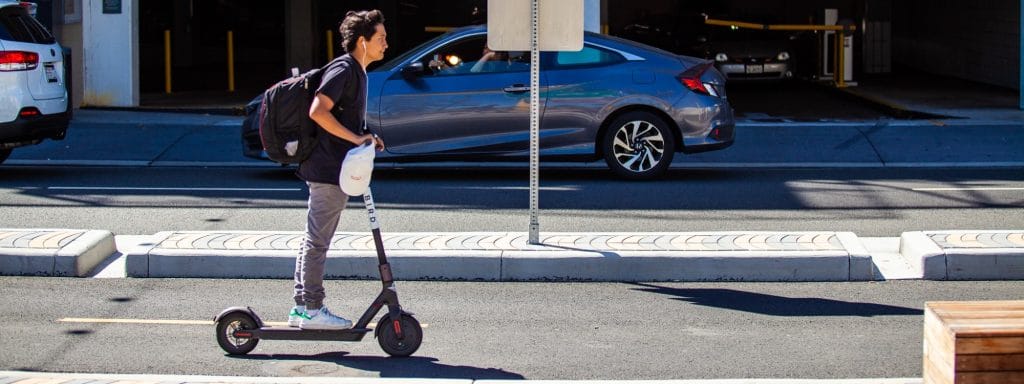 A lot of the potential net-good of these e-scooters hinges on whether or not they are encroaching into automotive mode share and vehicle miles traveled (VMT) by cars.
A lot of the potential net-good of these e-scooters hinges on whether or not they are encroaching into automotive mode share and vehicle miles traveled (VMT) by cars.
Currently, the data we have on dockless bike, e-bike, and e-scooter fleets in a U.S. context is limited by their recency. But, in my anecdotal observation riding my bike around Santa Monica and the initial data we do have starting to come in, I see little reason to doubt they are at least for a substantial portion of trips eating into what otherwise might be short car trips locally. In some cases replacing what otherwise might be longer distance car trips by increasing the potential ridership of public transit like the Expo Line by extending the distance from stations that people will travel from to get to stations, as evidenced by how many end up being left off by users around the stations.
In some cases dockless e-scooters and bikes may be replacing conventional bike or hub based bike share trips, walking, or bus trips as well, but their introduction makes it more viable and attractive to go car-free or car-lite for a wider range of people, or to utilize cars less often.
Lyft and Uber certainly believe dockless mobility companies and providers are competition to car trips, including their own business, and are staking capital on that belief going on a buying spree to acquire bike, e-bike, and e-scooter fleets and services. It’s taken them long enough to realize the real “disruption” isn’t in rearranging the deck chairs on car culture, it’s in multi-modal travel and replacing car trips in areas where cars have long since past the point of diminishing returns to in many times and places becoming an exercise in futility.
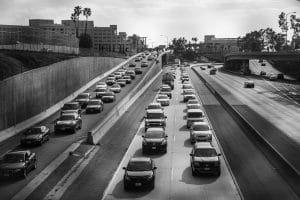 Given the federal government’s push under the Trump administration to nullify California’s ability to set it’s own vehicle emission and fuel economy standards (standards which have been adopted by 13 other states plus D.C.), it cannot be counted upon that we can use state regulation of manufacturing standards of cars to reduce transportation emissions. Even if the CARB (California Air Resource Board) standards were not threatened, the time sensitivity of climate disruption and the many environmental and health impacts of cars that extend far beyond direct tail pipe emissions, vehicle emission regulations are inadequate on their own for the scale of dilemmas cars leave us with. The Air Resources Board also acknowledged in a meeting last month that even a far more aggressive policy push for zero emission vehicles adopted immediately is inadequate to meet our long term emissions targets without reductions in VTM.
Given the federal government’s push under the Trump administration to nullify California’s ability to set it’s own vehicle emission and fuel economy standards (standards which have been adopted by 13 other states plus D.C.), it cannot be counted upon that we can use state regulation of manufacturing standards of cars to reduce transportation emissions. Even if the CARB (California Air Resource Board) standards were not threatened, the time sensitivity of climate disruption and the many environmental and health impacts of cars that extend far beyond direct tail pipe emissions, vehicle emission regulations are inadequate on their own for the scale of dilemmas cars leave us with. The Air Resources Board also acknowledged in a meeting last month that even a far more aggressive policy push for zero emission vehicles adopted immediately is inadequate to meet our long term emissions targets without reductions in VTM.
At the local level we have many incredibly powerful tools for reducing car trips (parking reductions& pricing, congestion pricing, bans from streets or areas, caps on ownership) if we are willing to exercise them. However we largely tread timidly in doing so despite all the complaints over traffic congestion, in large part for the understandable reason that so much real and perceived car dependency has been baked into our status quo and built environment over the course of many decades. We need alternatives to driving cars to be viable, convenient and desirable for a wide range of trip types to open up more political possibilities, and e-scooters are another arrow in the quiver to fire at the beast of car domination and begin breaking its stranglehold on the public realm.
![]()
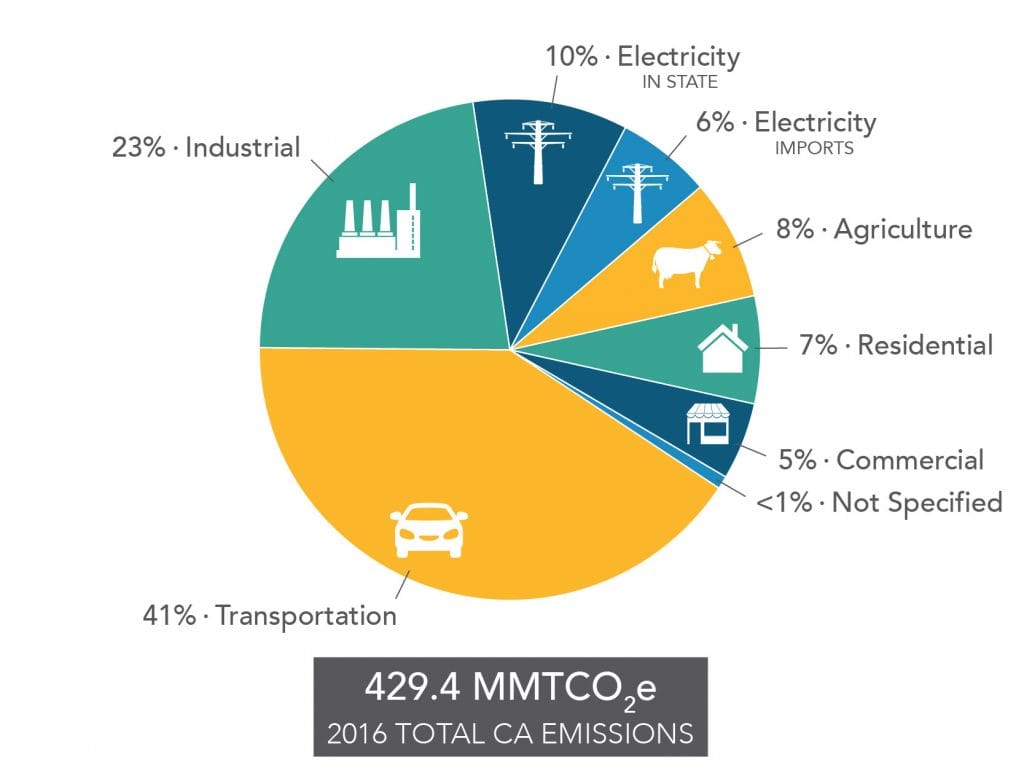 Climate disruption is real, impacting and ending lives now, and is on track to get much worse on the trajectory we are on. The future of car centric culture if we perpetuate such a future, even if we continue to incrementally adopt EVs as we are now, is one I imagine to look a lot like recent images in the news during this unprecedented on record global heat wave and related global warming super charged fires raging abroad and in California; people incinerated alive in their melting cars trying to escape the world burning like the horrific aftermath images from Greece.
Climate disruption is real, impacting and ending lives now, and is on track to get much worse on the trajectory we are on. The future of car centric culture if we perpetuate such a future, even if we continue to incrementally adopt EVs as we are now, is one I imagine to look a lot like recent images in the news during this unprecedented on record global heat wave and related global warming super charged fires raging abroad and in California; people incinerated alive in their melting cars trying to escape the world burning like the horrific aftermath images from Greece.
Or at the other end of the elemental spectrum, drowning in cars attempting to escape epochal flooding, but more so, more frequently, and on a larger scale.
That may sound bleak, grim, and harsh, but the reality is harsh, and transportation is at the epicenter center of our contribution to global warming emissions. And if you dig into those emissions further, it’s notable how much of the industrial slice of the pie is made up of supporting industries that keep the cars running, with oil refineries and the fuel used by the oil industry itself to extract fuel a significant subset of industrial emissions.
Buried under the plaudits for California meeting it’s 2020 GHG emissions goal early, accomplished primarily from tackling low hanging fruit in electricity generation, is that transportation emissions are actually trending worse, and are now an even greater dominant share of our emissions. At the municipal level in Santa Monica the proportion of emissions from transportation is even more lopsided than it is in the state as a whole. There is no sustainable and viable future without tackling the Goliath of transportation emissions.

One of the most oft discussed issues around attracting public transit ridership, which despite the growth of the Expo Line ridership, is overall trending down in the Los Angeles region recently, is the “last mile problem,” and diagrams are drawn of “walk shed” radii from which people are typically willing to walk for a quality transit connection such as the Metro Expo Line. Connecting bus service helps feed ridership, but not everyone is near a bus stop, and not all areas have the density of housing or activity to support the kind of service frequency where people with access to car use will likely trust the reliability of making a connection.
Bicycling helps, and bike share allows connections without having to either lock up a personal bike or take one on board, but bike share hubs as currently deployed aren’t convenient to everywhere. Densifying around stations enables more to live and work in the “walk shed,” but due to longstanding resistance to up-zoning on the Westside, the built environment as it is only lends itself well to walking in select pockets that are not readily accessible to all. 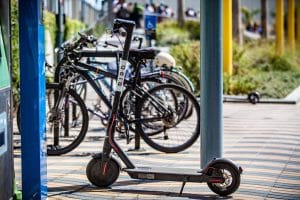 The rise of Lyft and Uber has facilities closing gaps in transit network connectivity, or unfortunately wholly replacing transit use in some contexts, but with car trips where for every mile with a passenger is another mile in circulation seeking passengers. The dockless scooters appear to be attracting new users, are cheaper than ride hailing (though more expensive to use than our bike share when bikes returned to dedicated hubs) and are an especially well suited last mile solution to longer distance transit connections that has seemingly fallen into our lap. We should be encouraging this.
The rise of Lyft and Uber has facilities closing gaps in transit network connectivity, or unfortunately wholly replacing transit use in some contexts, but with car trips where for every mile with a passenger is another mile in circulation seeking passengers. The dockless scooters appear to be attracting new users, are cheaper than ride hailing (though more expensive to use than our bike share when bikes returned to dedicated hubs) and are an especially well suited last mile solution to longer distance transit connections that has seemingly fallen into our lap. We should be encouraging this.
Some view the scooters as a “tech-bro” thing, or a tourist trap, only or predominately utilized for “joy riding” (“real” transportation is supposed to be miserable apparently), but looking out at the phenomenon from my regular travels cycling around town, I see another puzzle piece moving into position revealing a post automobile centric future for cities.
I think they are already doing a lot of good, but it’s not just about these devices and what they can do or how they are used at this moment, but iterations that will follow more in this vein rather than modeled on the paradigm of car culture. This explosive growth curve, from nothing to seeing the scooters zip by everywhere in Santa Monica in less than a year, is exactly the kind of speed of change we need to be operating at. That comes with friction, but the imperative to move transportation toward zero emissions cannot be delayed. We can address safety concerns without resorting to measures that stifle adoption, and fundamentally by inherent design of being light weight and capped speed, they represent dramatically less of a public hazard than cars.
The incrementalist desire to only gently nudge from the status quo is not far removed from climate denialism with where we are in the crisis now, after so many decades of either denial or largely ineffectual action.
If todays older generations wanted climate mitigation to be a gentle transition and not a series of varying degrees of intensifying upheaval to established orders, the time for starting that would have been decades ago. Instead we got the rise of bigger cars, SUVs imposing more public health risk and turning progress on vehicle emissions backward. Let the scooters roll on.







